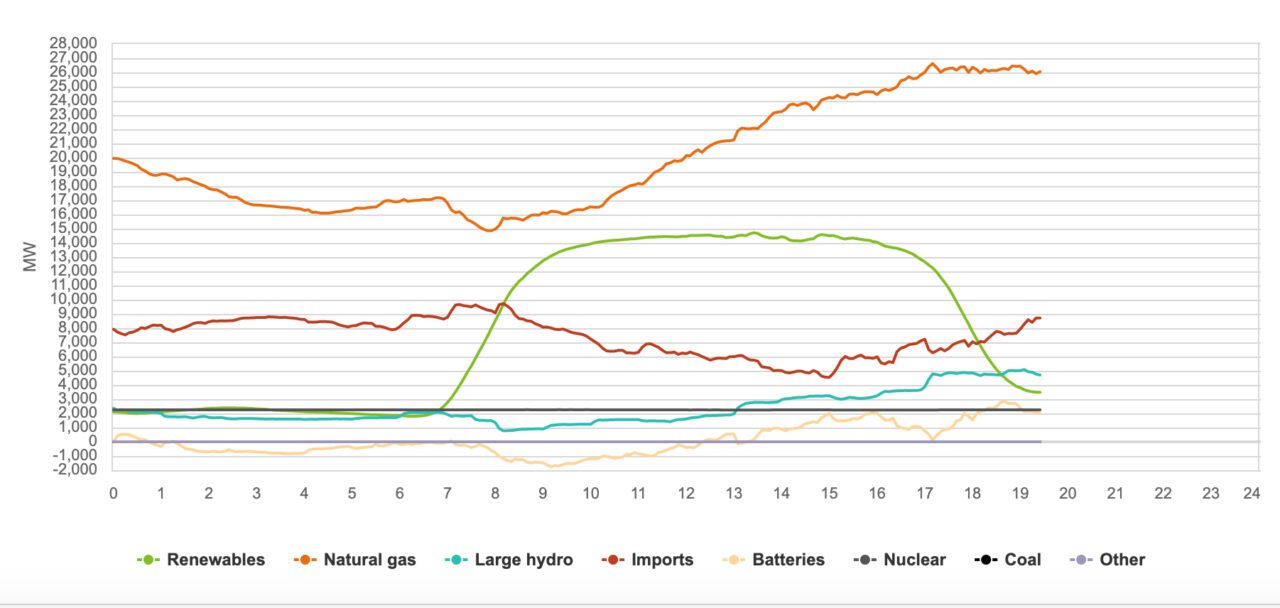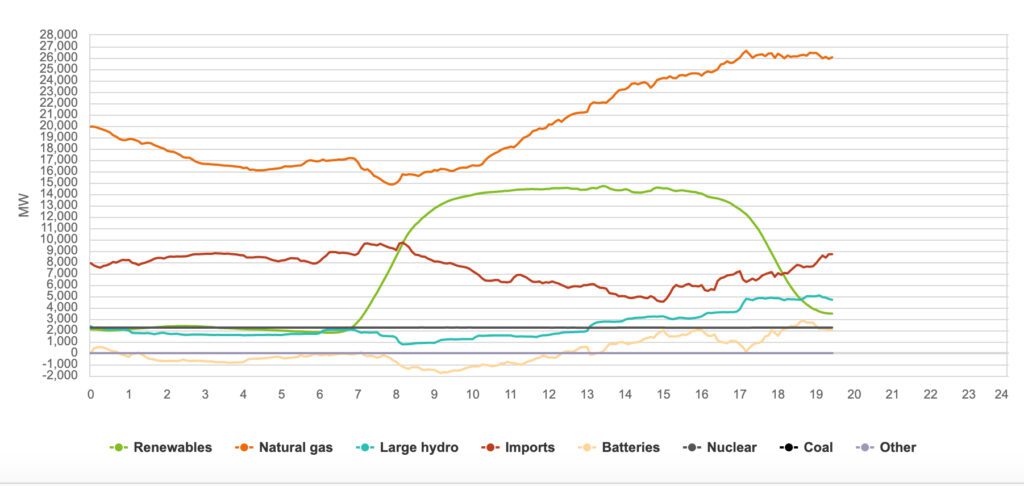
California’s grid operator issued a Stage 3 energy emergency alert (EEA) at 5:17 p.m. PST on Sept. 6, warning it would order rotating power outages to lower soaring power demand and stabilize its grid if necessary.
The California Independent System Operator (CAISO) cautiously raised the emergency alert from Stage 2, which it had declared earlier on Tuesday, based on forecasts that the state faced energy deficiency with all available resources in use until 8 p.m. PST. While the EEA 2 alert signaled to grid participants to bid more energy into the market and opened emergency demand response options, the grid operator on Tuesday evening warned that a historic heat wave was compounding tight supply conditions.
An EEA 3 alert means that the ISO is unable to meet minimum contingency reserve requirements. “Maximum conservation efforts are urged,” CAISO said in its EEA 3 notice. “During this time, participating customers will be directed by utilities to use generators approved for emergencies, or to reduce load following the protocols of each utility program.”
#ISO declares an Energy Emergency Alert 3. We have not called for rotating power outages yet.
— California ISO (@California_ISO) September 7, 2022
Peak electricity demand in CAISO soared to 52.1 GW on Tuesday—a historic all-time high for the grid operator that serves 32 million customers, representing about 80% of California’s demand. As of 7 p.m. PST, the grid operator reported it had not needed to shed load. “Conservation is making a difference,” it said. It ended the EEA 3 at 8 p.m. PST with no load sheds.
At 8 p.m., the grid operator ended its Energy Emergency Alert (EEA) 3 with no load sheds for the night. Consumer conservation played a big part in protecting electric grid reliability. Thank you, California!
— California ISO (@California_ISO) September 7, 2022
Avoiding Brownouts
Tuesday’s desperate call for conservation was reminiscent of two back-to-back EEA 3 events on Aug. 14 and Aug. 15, 2020, when an extreme heat event precipitated into a series of power outages—marking the state’s first brownouts since it suffered an energy crisis in 2001. CAISO’s peak load in 2020 was 47.1 GW. In 2021, the grid marked a peak load of 43.9 GW.
Compounding the state’s soaring demand is its rapidly changing supply profile. Since 2015, 58% of the state’s steam turbine natural gas units—a combined 6.5 GW—have been retired, while solar capacity has increased by 8.8 GW. California has also added 2.3 GW of battery storage capacity. However, even when California’s battery capacity additions are considered, the total share of dispatchable resources is lower in 2022 than in 2021, a factor that is made more complex by the loss of hydropower generation, which is a key source of operational flexibility that is well-suited for ramping up and down to offset changes in renewables.
In 2021, the state grappled with a worsening drought that prompted the loss of 644 MW of hydropower at Hyatt Power Plant at Lake Oroville, as well as 4 GW of imports lost due to wildfires. This June, the Energy Information Administration warned the drought could nearly halve the state’s hydroelectric generation this summer. The state’s woes on Tuesday, however, stem from the worst September heat wave the West has faced. The heat wave, prompted by a heat dome that is parked over the West, sent temperatures soaring in the triple digits in Sacramento, and up to 94F in Oakland.
CAISO’s supply picture as the EEA 3 alert was declared suggested natural gas power and hydropower plants were overwhelmingly producing the bulk of its power.

At Issue: Addressing Climate Change Impacts
Climate change impacts on the grid have weighed heavily on California’s legislators and regulators. Since the August 2020 brownouts, CAISO, the California Energy Commission (CEC), and the California Public Utilities Commission (CPUC) have acted with urgency to secure reliable sources of power that could protect the grid from extreme event risks, including heat waves, wildfires, and drought.
A key concern is how quickly the state can ramp up its capacity profile to address extreme weather and fire risks. The CEC’s final summer stack analysis for 2022–2026—a tool it developed to assess supply conditions against average and extreme weather conditions for the key months of July through September—projects the potential need for contingency resources of 1 GW in August and 3.5 GW in September. The analysis also projected “maximum shortfalls” of 1.1 GW higher in September compared to contingency needs projected in January 2022. The final stack analysis’s updated figures take into account several inputs, including the demand forecast, new resource projections, and drought impact on hydropower, the CEC said.
California’s lawmakers have meanwhile also acted with urgency to help the state ramp up its supply portfolio. In June, the state’s legislature passed a bill that could extend the operating lives of existing generating facilities slated for retirement. The measure created a strategic reliability reserve that will incorporate up to 5 GW of capacity. On Sept. 2, meanwhile, lawmakers passed Senate Bill 846, effectively offering Pacific Gas and Electric (PG&E) a pathway to keep the Diablo Canyon nuclear power plant open until at least 2030.
—Sonal Patel is a POWER senior associate editor (@sonalcpatel, @POWERmagazine).
The post California Declares Stage 3 Emergency Alert, Warns Rotating Outages Possible appeared first on POWER Magazine.